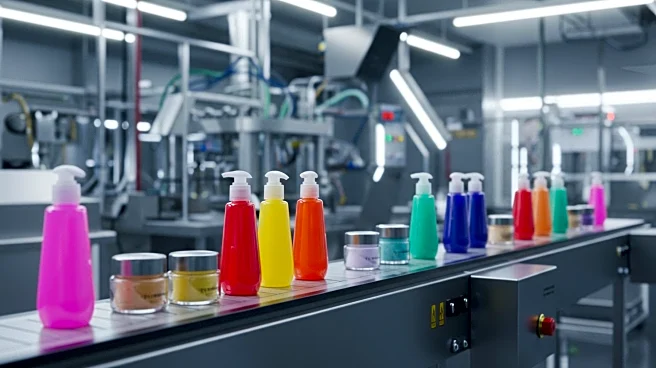What's Happening?
The cosmetics industry in North America, valued at approximately $6.85 billion in 2025, faces significant challenges due to tariffs on imported components, which can increase costs by up to 25%. To mitigate these impacts, beauty brands are adopting diversified supply chain strategies. Growth Catalyst Group, an e-commerce beauty brand, has successfully reduced costs by 8% through redesigning its fulfillment network, moving away from coastal distribution hubs to a more balanced, demand-driven model. This approach not only saves money but also reduces lead times and improves customer satisfaction. A hybrid supply model, combining U.S. production with onshoring and nearshoring in countries like Mexico and Canada, is recommended to manage costs, volatility, and risks while maintaining global partnerships for innovation and scale.
Why It's Important?
The adaptation of supply chains in the beauty industry is crucial for maintaining competitiveness and sustainability. Tariffs pose a significant threat to pricing, affecting both beauty brands and their packaging partners. By diversifying supply chains, companies can better manage costs and reduce risks associated with external economic pressures. This strategy also supports sustainability goals, as localizing production using recycled content and lower-carbon logistics becomes increasingly important. The ability to respond creatively and defensively to tariff challenges ensures that beauty brands can meet consumer expectations and future-proof their supply chains.
What's Next?
As beauty brands continue to adapt to tariff challenges, the focus will likely remain on enhancing regional networks and optimizing materials. Strong communication with partners and early forecasting will be essential to stay ahead of disruptions. Brands may also pursue more significant sustainability goals, integrating recycled content and lower-carbon logistics into their supply chains. The ongoing evolution of supply chain strategies will be critical in maintaining resilience and competitiveness in the face of external economic pressures.
Beyond the Headlines
The shift towards diversified supply chains in the beauty industry highlights broader trends in global trade alignments. As tariffs become a political tool, industries must innovate to remain resilient. This development underscores the importance of strategic planning and collaboration in navigating complex economic landscapes. The emphasis on sustainability also reflects changing consumer expectations, pushing brands to adopt environmentally friendly practices.












